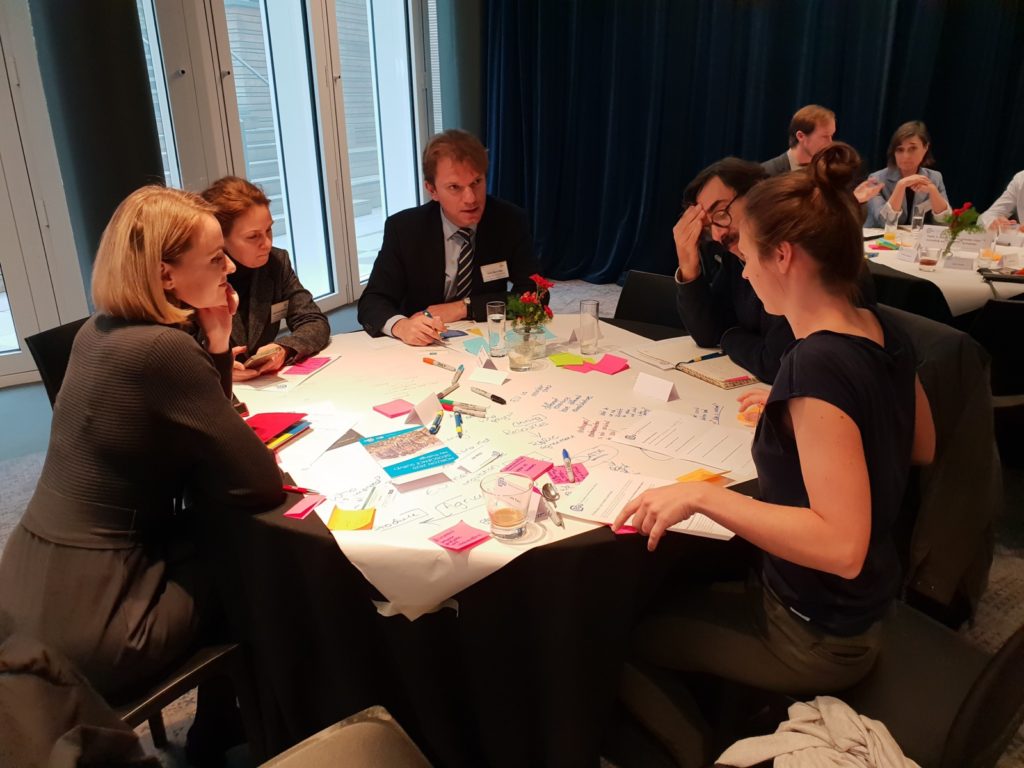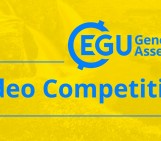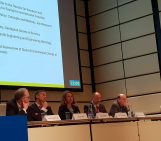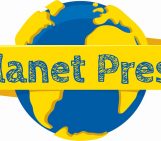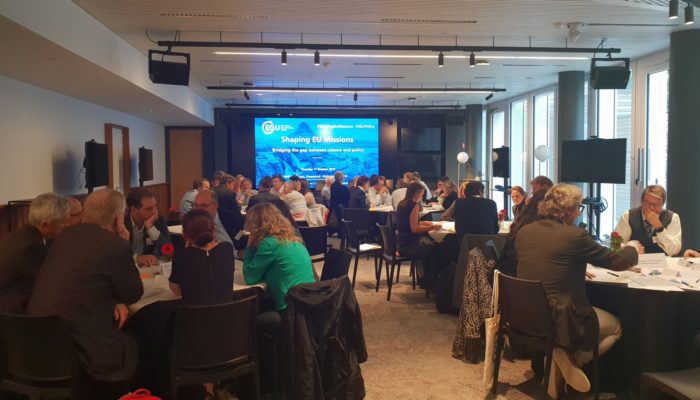
This month’s GeoPolicy blog post is a Q&A about the EGU’s second annual science-policy event, Shaping EU Missions: bridging the gap between geoscience and policy which was hosted in Brussels on October 17 2019.
The EGU has an annual event outside of the General Assembly??
Yes! Except this one is much smaller with about 70 participants and relatively new (only starting in 2018). The EGU hosts these science-policy events in Brussels to discuss issues and topics that are important to the geoscience community as well as to facilitate collaboration between geoscientists and policymakers. These events also aim to highlight policy-relevant outputs from EGU scientists and support evidence-based policymaking.
But what are they actually about?
The themes of EGU’s science-policy events are selected based on their significance to the geoscience community as a whole and their relevance to Europe’s current policy issues. And yes, finding a theme that fits into these criteria can be quite tricky! This year’s science-policy event was about the EU Commission’s “Missions” which are part of the EU’s next research and innovation framework programme, Horizon Europe,
What are these “Mission” things?
But what does all this have to do with the EGU?
Encompassing a large number of scientific disciplines, the geosciences play an important role in all of the EU Missions as well as many policy decisions, including but not limited to, those related to climate change, natural hazards, energy, agriculture and ocean health. This event is therefore an opportunity for researchers to share their expertise with policymakers and discuss the specific issues within each of the Missions, as well as to assess how greater collaboration between the two communities can be achieved to overcome societies biggest challenges.
- Adapting to climate change, including societal transformation
- Healthy oceans, seas, coastal and inland waters
- Climate-neutral and smart cities
- Soil health and food
So, scientists presented research that related to the Missions during the event?
Not exactly! The event was kicked-off by a panel of speakers who who outlined the role of the Missions, how they are likely to function and what can be done to bridge the gap between science and policy.
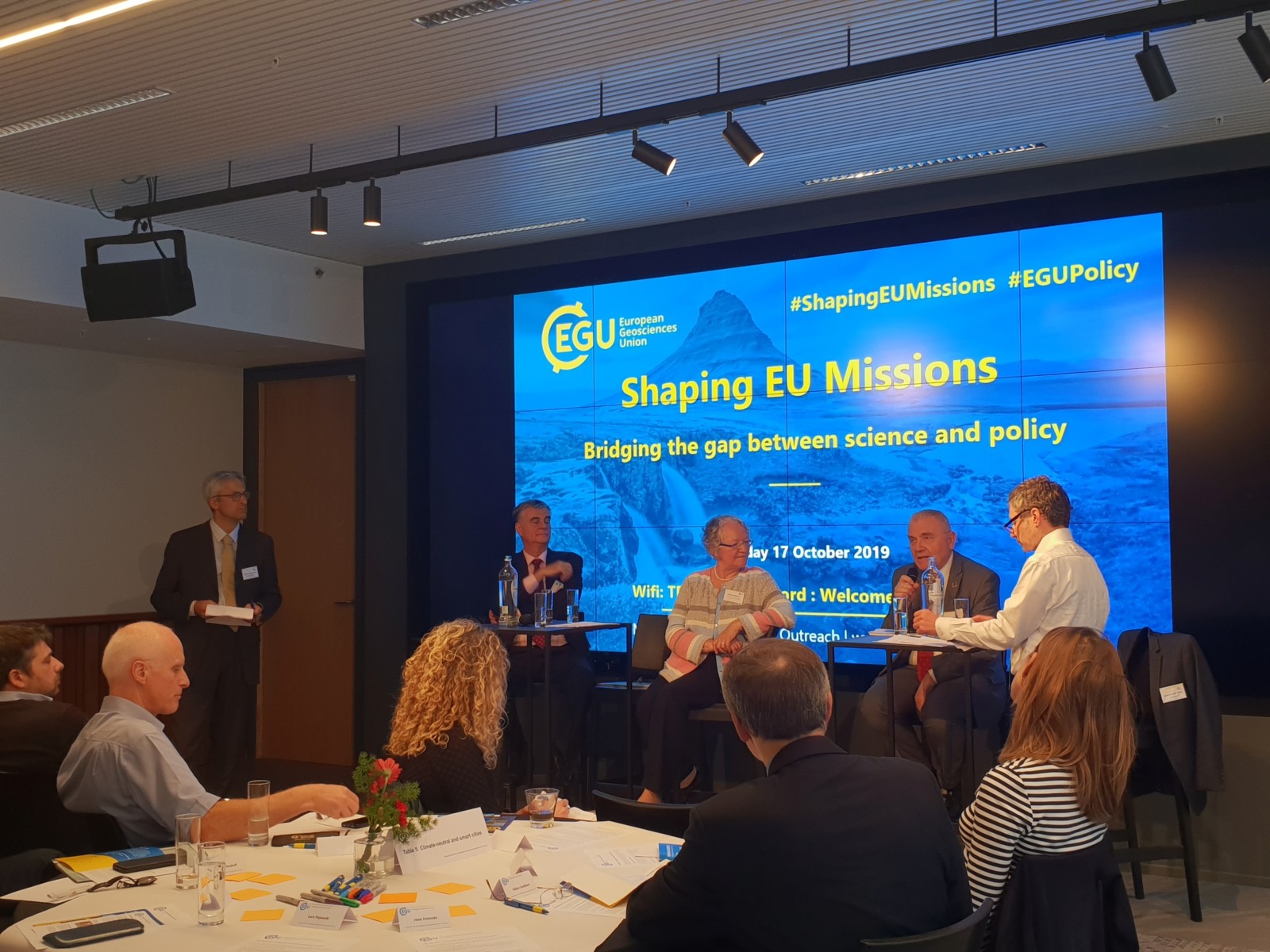
Shaping EU Missions panel speakers (from left to right): Constantin Ciupagea (Head of Land Resources Unit, Joint Research Centre), Gesine Meißner (Member of the Mission Board for ‘Healthy Oceans, Seas, Coastal and Inland Waters’) and Jean-Pierre Bourguignon (President of the European Research Council)
The rest of the event consisted of roundtable discussions which focused on specific issues within the broad EU Mission themes and involved all of the event’s participants. Roundtable discussions give all attendees the opportunity to get involved, share their own expertise and learn from the others at their table. They also allow participants to connect with each other, hear alternative viewpoints and ask questions that they might not feel comfortable asking during a more formal setting. Each of the Shaping EU Missions’ roundtables had a moderator to help navigate the discussions and ensure that the participants stayed roughly on topic.
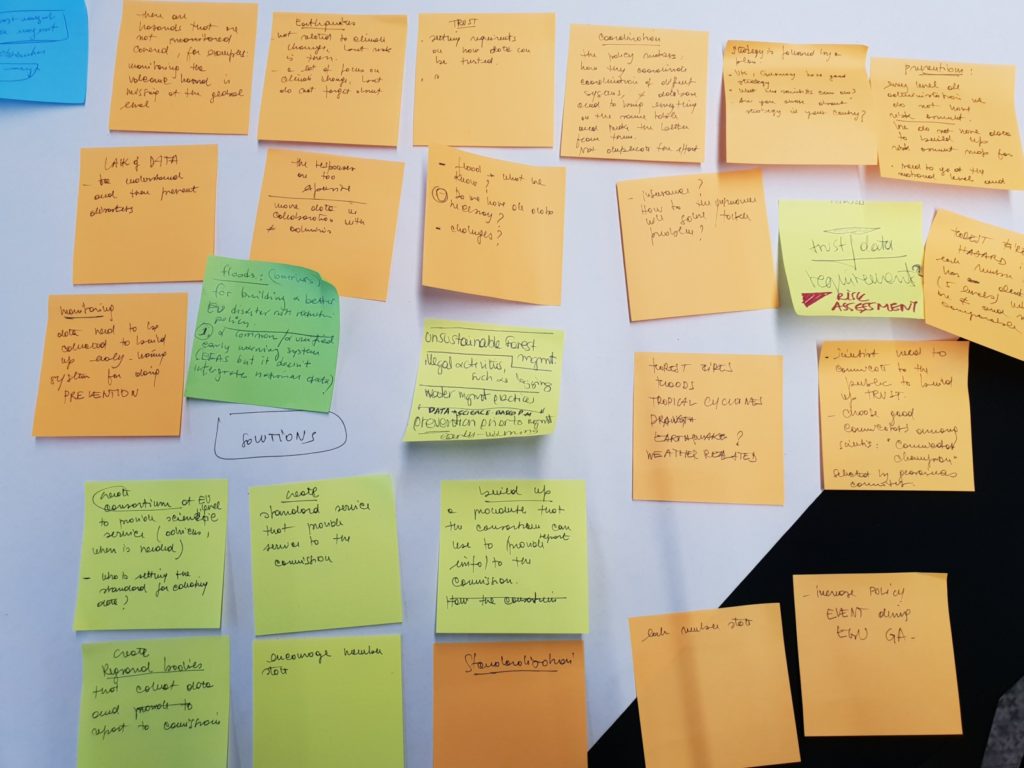
Extensive Post-It notes from the ‘Adapting to climate change, including societal transformation’ roundtable discussion! Credit: Chloe Hill, EGU
What were the outcomes of the roundtable discussions?
Good question! Despite the varied themes discussed, a couple of suggestions were outlined by multiple tables. Participants believed that scientists, institutions and other stakeholders will better understand how they can best contribute to these Missions if the boards publicly outline how the Missions will work, overcome knowledge gaps, and be transformed into policy.
It was also suggested that establishing a shared knowledge interface could enhance the exchange of ideas, progress, common themes and solutions. This would not only allow the Missions to solve individual problems but also improve the connectivity between different types of science and data, bringing all the types of knowledge generation together and making it available.
The roundtable discussions also focused on aspects relevant to the particular Mission Boards. You can read the report outlining all of the events outcomes here.
Where can I find more information?
You can read more about the event in this EGU news item which was published earlier this month and read the report outlining all of the events outcomes here.

